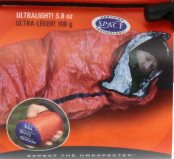
| Altitude Sickness in the Grand Tetons |
Let there be no doubt, Grand Teton National Park is a high elevation park. Even if you're not a mountain climber, altitude sickness is something every visitor to the Grand Tetons should be aware of. Elevations in the park range from 6320 feet in Jackson Hole, to 13,770 feet atop Grand Teton. Moreover, many hikes in the park begin above 6,800 feet, and easily climb to 10,000 feet and higher.
 Altitude sickness, also known as acute mountain sickness (AMS), can occur in some people at elevations as low as 8000 feet. AMS can affect as many as 20% of all visitors who travel from sea level to above 8,000 feet, regardless of their physical condition.
Altitude sickness, also known as acute mountain sickness (AMS), can occur in some people at elevations as low as 8000 feet. AMS can affect as many as 20% of all visitors who travel from sea level to above 8,000 feet, regardless of their physical condition.
Above elevations of 10,000 feet, 75% of all people will experience mild symptoms of altitude sickness, which include, headache, nausea and dizziness, loss of appetite, fatigue, shortness of breath, and a general feeling of malaise.
At higher elevations where moderate or severe cases of AMS can occur, be aware of severe headaches (that aren't relieved by medication), nausea and vomiting, increasing weakness and fatigue, and decreased co-ordination.
If you experience any of these symptoms, the best remedy is to descend at least 1000 – 1500 feet, or more, as soon as possible.
There are several steps you can take beforehand to help prevent altitude sickness:
* Stay properly hydrated. Fluid loss normally occurs during the acclimatization process, so you need to drink lots of fluids (water is great, but no alcohol) to remain properly hydrated.
* Spend at least one night below 7,000 feet prior to setting out. This will allow your body to begin to adjust to the change in elevation.
* Adjustment to high altitude is best done by acclimating slowly; build up to higher elevations over several days. If acclimating slowly is not possible, take it easy, walk slowly, avoid strenuous walks and hikes, and take time to enjoy the scenery.
* Eat a high calorie diet while at altitude.
* Avoid tobacco, alcohol and other depressant drugs.
* If you go above 10,000 feet, only increase your altitude by 1,000 feet per day, and for every 3,000 feet of elevation gained, take a rest day to acclimate.
* Climb high and sleep low. You can climb more than 1,000 feet in a day as long as you come back down and sleep at a lower altitude.
* If you begin to show symptoms of moderate altitude sickness, don't go higher until symptoms decrease.
* For more information you can visit the NOLS Wilderness First Aid altitude illness page.